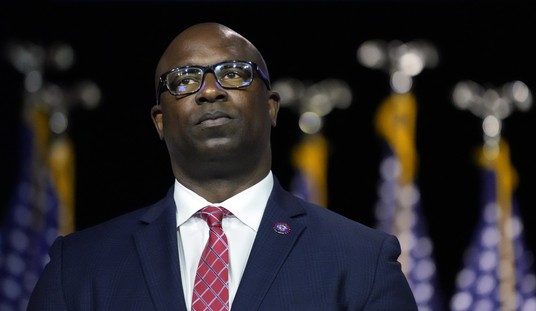In early 1989, grime-covered coal miners, leading troglodytic lives filled with dust and danger, gathered one morning by their lockers, changed into their work gear, and, with helmets in place and headlamps lighted, refused to decamp into the their underground workplace.
At issue wasn’t mine safety; nor was it wages, but rather things more mundane: soap and toothpaste. Neither was available to miners and their families in the isolated mining town.
Like coal mining towns in West Virginia, Ohio and Virginia, this town was bent to the exigencies of industry and commerce—the quality of life for miners often suffered as a result. The town was old-fashioned in both geography and city planning. While retaining the natural dignity and beauty of the boreal forests growing on hillsides surrounding the community, there were few amenities available for the citizens. The people there lived hard, nineteenth century lives; living behind-the-times and in isolation-- with lives made harder by the exploitation of mine bosses who controlled little things like vacation time. Vacation time may seem a small matter but it’s important to people who live their lives underground and rarely see the sun, writes David Satter in The Age of Delirium[1].
The workers and their families were underfed too-- amazingly as we approached the 21st century-- without basic amenities like laundry detergent, indoor toilets and running water. Union bosses ignored workers’ appeals to get them the necessities of life; and even letters to a local television show complaining about conditions got no response.
The management of the mine, in desperation, and after considerable agitation from workers, resorted to another ruse, as they had on other occasions. It was the kind of ruse they had used before to support the myth that management “cared” about the workers. They gave the workers a harsh mechanical soap to clean up with after work, “a washing-up liquid that was used for cleaning engines and caused their hair to fall out,” Satter continues. “As the taps broke on showers, four men were forced to wash under one shower.”
The workers this time had enough of excuses. They went on strike, occupying the town with a self-organized militia and sending emissaries to other workers and other towns, with the strike spreading regionally.
The management of the mines could do nothing to stem the strikes either. They could offer the strikers neither soap, nor toothpaste, nor detergent.
All they could offer them were more lies, excuses and myths.
That’s because the managers weren’t made up of greedy corporate types, nor were the union bosses corrupt underworld figures getting paid off by management to ignore the concerns of workers and their families.
Recommended
Instead, the union and the mines represented their masters in Moscow, the Union of Soviet Socialist Republics (USSR), a passel of states that couldn’t have cared a lick about a profit and loss statement, but instead proclaimed itself a workers paradise—soap and toothpaste apparently not included.
The problem was that the economy of the USSR revolved about this economic myth: It didn’t matter what something cost. What mattered was producing enough of it to go around. Of course enough-to-go-around which happened even in basic things like foodstuffs. It had been that way since Lenin had discovered Marxist economics a fraud. Since then the state had resorted to makeshifts, stratagems and sophistication to keep their economy producing—barely, mostly and rarely, too often —the necessities of life under the myth of the superiority of the Marxist economy. The main purpose of the Marxist economy was to get it to produce what the politicians thought was important without regard to the economic consequences. In essence the Soviet economy became a strange admixture of the desires, peculiarities and mistakes of the men at the very top dressed up in mythology of the great soviet state, a state where few women were allowed top jobs.
And there in the Kuzbass mining region of Siberia, the mythology was turning into a tragedy. The system was playing out its economic deathbed scene; a scene consequent to running a system based on pretend economics; with death put off for so long by lies, propaganda and plain, old-fashioned force. As the Kuzbass strike spread, the loss of coal production gave the final impetus to the Soviets crumbling social system, so long made ill by economic unreality trussed up by the threat of the Gulag.
While it took 70 years for death to come, the economic expression of its lies finally overwhelmed the Soviets over the period of 1989 and 1990. In part this was because the leaders lacked the desire to use old-fashioned force-- as they had in the past-- to enforce beliefs in the myths and mystics that had always characterized the Soviet economic system.
That it took 70 years for the economic truth to work out shouldn’t surprise us. Nor should we be surprised in retrospect that the end came eventually the way it did. History, like economics, keeps its own time, and its own schedule.
But the end did come. And it contains a lesson for us about mythmaking and the economics consequences of ideology as a substitute for common sense. Eventually, truth, as expressed by economics, wins out. You can try to fool people with sophisticated ideological arguments as to why some economic policies are better than others, but even in a closed economic system like that of the old Soviet Union, market forces come to win eventually.
Today in America we are in danger of ignoring the economic lessons of the last 300 years of our own history—not to mention that of recent Soviet history-- lessons that have been applied throughout U.S. history to create not just a better country, but also a better world. And it isn’t only jobs that are at stake. Our ability to act on the world stage, to secure our own peace, is at issue as well.
From 1861 to 1865 Union forces in the Civil War enjoyed an economic edge over the Confederacy that eventually allowed the country to destroy slavery. Without that economic edge the bad guys might have won. Indeed the Confederacy was done in as much by the economic myths created by their own ideology as they were by the superior economy of the Union. Then in Word War I and World War II, the American economy allowed the Allies to logistically overwhelm Germany twice in within 30 years. During the Cold War, finally, it was America’s ability to outspend the Eastern Bloc on guns and butter that finally wore down the communists.
Today, the United States is embarked on a massive experimentation in social engineering supported by myths—some economic, some just social with economic implications-- that are unprecedented in the scope and scale. And we can ill afford to ignore the truths and, more importantly, the myths, that will be eventually be expressed—for good or ill-- in our economy by these experiments.
Economics is not a parlor trick, in other words, where you can get the outcome you want by sleight of hand. The economy has iron clad science behind it. It is not, as Karl Marx and Thomas Piketty supposed, an expression of final historical destiny. Instead, it is the ultimate expression of a society’s foibles, bad habits and mostly their delusions, even if these expressions are poorly understood by social scientists. It may take a while for these expressions to be obvious, or even consequential, but there is no amelioration of the consequences of say, of defining the fulltime work week as 30 hours long, even if one desires to do that and accepts the consequences of the action. The danger is in pretending that the new definition of fulltime employment has only positive consequences because a white paper or an academic report-- both often written as a justification for political policies-- told us that such was the case.
Economists, after all, are forever explaining why they are wrong about things they really should get right if they understood their science so well: GDP forecasts, job growth estimates, trade deficits- and these are areas that generate numbers in real time and so should be subject to easy forecasts. Yet even here, economists propose one thing and the economy disposes another, as it is said about that other unmovable, superior force that liberals pretend to control: God.
So why should we trust them with the big, controversial problems like the fulltime workweek, when they get the little details so wrong?
And as we saw in the case of the Soviet Union, and in other cases too, revolutions are given their main impetus by these failures to embrace economic truths and the insistence on embracing economic and social mythology instead. Revolutions are not created in and of themselves by a failure of politics. It is rather when politicians lose control over economies that revolutions are born.
And it is in the politicians’ ability to get you to believe their own lies and myths that danger resides.
The most successful and arguably greatest military strategist of all time, Napoleon Bonaparte, complained from exile in St Helena: “When I think that, for a cup of coffee with more or less sugar in it, they checked the hand would set free the world.”
While it is debatable that Emperor Napoleon ever intended “freedom” for the subjects of his empire in any way you and I would recognize it, it is often overlooked that the English beat Napoleon by a strategy that was made possible only by the robustness of the English economy and trade. As historian Vincent Cronin observed, for all the glory Napoleon achieved as a military commander, it was his failure to deliver the economic goods that led to his downfall.
Show me a society without enough to eat, and I will show you a people ripe for revolution.
And today the United States is following policies that, if not reversed, will have the revolutionary effect of making it more difficult for poor people to get enough to eat, for education to open up opportunities, for innovation to create new wealth and for America to resemble the great economic engine of change that it’s been for 300 years—not just at home, but overseas as well.
Already we have policies, created decades ago that can’t be fixed but must ultimately be replaced. Yet replacement remains elusive because the policies are supported by myths.
---
Myth: Social Security Can Be Fixed
There are so many myths surrounding our Social Security system that’s it’s hard to pick one overweening myth. It better though that we call is what it is: The Soviet Security System. Because as we discuss ways of fixing system, we come to understand one thing: There is no “fixing” of Social Security. We can not make little adjustments here and there to get the system to work better. Instead we face two choices and only two choices: We can only get rid of it entirely or we can replace it with something else.
That’s because Social Security has been sold to the American people under several different myths. The most heinous of all the myths is that Social Security is an insurance policy for old age. It is not.
People believe that money taken from their paycheck will one day be available to them, after being kept in a separate account and invested for their benefit. And why would they not? The government calls Social Security as an insurance policy and that’s how insurance policies work. Certainly it has some insurance features like disability.
But an insurance model is not how Social Security works for it’s main function as a retirement plan. The Social Security works in the opposite manner actually. The system was designed to take money paid in today to pay out benefits today. In other words, the money you pay today goes to people retired today. That means that the system requires enough workers today to support today’s retirees. If a private insurance company ran their business this way, the managers would go to jail. The common term for this type of racket, getting past the rhetoric, really is a Ponzi scheme.
“A Ponzi scheme is a fraudulent investment operation where the operator, an individual or organization,” says Wikipedia, “pays returns to its investors from new capital paid to the operators by new investors, rather than from profit earned by the operator.”
This is exactly how Social Security works. The operator-- in this case is the government-- pays retirees from new capital (taxes) paid by new workers, rather than from profits earned by the operators.As long as we don’t run out of willing victims, the scheme works. But when we do run out of enough workers, as was foreseen when Social Security was first created, then we have problems, big problems. One way the government has found to protect the program is to give people the sense that the money from Social Security is a contribution like in a retirement plan rather then a tax to support someone else’s retirement today.
The Math Behind the Myth
The Congressional Budget Office (CBO) has reported that healthcare costs and Social Security costs are likely to bankrupt the country in the next 25 years.
This from the Associated Press, dated September 17th, 2013:
A new government study says that federal health care and retirement programs threaten to overwhelm the federal budget and harm the economy in coming decades unless Washington finds the political will to restrain their inexorable growth. The long-term pressures promise to quickly reverse recent improvements in the deficit.
Tuesday's Congressional Budget Office report says that government spending on health care and Social Security would double relative to the size of the economy in 25 years and that spending on other programs like defense, transportation and education would decline to its smallest level by the same measure since the Great Depression.
Oh, THAT’s all.
“In 1950,” wrote our friend Michael Tanner over at Cato in 2005, “there were 16 workers paying taxes into the system for every retiree who was taking benefits out of it. Today, there are a little more than three. By the time the baby boomers retire, there will be just two workers who will have to pay all the taxes to support every one retiree.”
Continues Tanner:
The Social Security payroll tax is already 12.4 percent of wages, or one eighth of a worker's total annual wages. It is the biggest tax the average household must pay. Roughly 80 percent of American families pay more in Social Security taxes than they do in federal income taxes.
Despite that already huge tax burden, the payroll tax will have to be increased by nearly half in order to continue paying Social Security benefits. That's a terrible burden to impose on our children and grandchildren.
And it’s so unnecessary too.
A person aged 25, earning the U.S. average wage of $42,500, who instead of paying into Social Security puts the money into a retirement account, would at 4 percent interest have $570,990 by the time they turned 60 years old.At a 6 percent return on investment the same contributions would grow into $826,580. [1] At 4 percent interest that’s a monthly check of $1,903 before touching principal. If you drew down principal as well, your check would start at $2,208 per month and end 25 years later at $4,488.50. At the 6 percent scenario—which is entirely plausible-- your retirement income would start at $4,015 and end 25 years later at $8,162. And neither of these scenarios takes into account that you’d be able to save money in the same way that you already do, thus adding to your retirement.
Today, the only folks approaching comparable returns from Social Security are those workers who have the maximum earning levels since the age of 22 years old. A 22 year old today would have to have an income of $117,000 as of 2014 and maintain that income and retire at aged 62. Since these are the folks who are most likely to be: 1) taxed to make up for shortfalls in Social Security; and 2) have their benefits cut to make up for shortfalls in Social Security, they are the exception that proves the rule.
Social Security isn’t just a ticking fiscal time bomb for our government either; it complicates an already difficult task for all of us in managing our retirements. And that’s why the government and the official Party of the government work so hard to perpetuate the myths that perpetuate the Social Security program.
We can’t fix Social Security; we can only destroy the myths surrounding it before those myths destroy us. Because if we continue to drift in this way, one day a group of people will assemble, like the miners did in Kuzbass, and demand by force the justice that government denied them economically.
And by then it will be too late.
[1] Details of Kuzbass Strike recounted from: Satter, David. Age of Delirium: The Decline and Fall of the Soviet Union. New York: Yale University Press, 2001. Print
[2] Retirement calculation assumptions: Age 25, $42,500 wage, average increase of 2.5%, inflation 3.0%, savings rate 12.5%, average rate of return 4% and 6%

























Join the conversation as a VIP Member